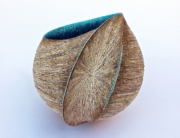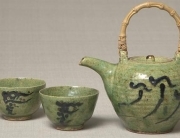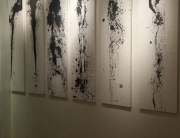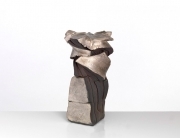Japanese traditional crafts
The history of Japanese ceramics can be traced back more than 10,000 years to the beginning of the Jomon period (10.500 to 300 BC) when unglazed earthenware known as Jomon Jomon goods (doki) were first produced. The introduction of agriculture in mainland Asia during the Yayoi period pass (300 BC-AD 300) was accompanied by the appearance of different types of clay unglazed known as Yayoi Yayoi goods (doki). Stoneware production began in Japan in the manufacture of goods Sue (Sueki) late in the 4th to early 5th century. Necessary technologies, which included the use of the potter’s wheel and kiln capable of reaching temperatures of sandstone, were introduced on the continent. Sue goods were made before and during the Heian period (794-1185). During the Nara period (710-794) cooked at a low temperature glaze pottery with artificially applied known tricolor ware Nara (Nara-sansai) was also made. The ceramic bonfire ash and iron glazes were first made during the Kamakura (1185-1336) and Muromachi (1336-1573) periods.
Azuchi-Momoyama period (1573-1615) saw the rise of the tea ceremony and the emergence of new forms of revolutionary ceramics reflecting the wabi and sabi aesthetic tea masters of the time. Successive advances in technology over the next period Edo (1615-1868) led to the widespread expansion of Japanese industry ceramics.
Kaneshige Toyo Bizen mimitsuki mizusashi (freshwater pot for tea ceremony, Bizen ware) This dynamic yet understated freshwater pot is a particularly successful example of the change oven (yohen) effect characteristic of goods Bizen.
Tomimoto Kenkichi irce kinginsai shibenka kazarizara (crockery, porcelain floral painted enamel glaze, gold and silver) One piece decorated with ornate original shibenka Tomimoto ( four petal flower) pattern gold and silver glaze.
In 1616, the porcelain stone, the raw material of porcelain, was discovered in Arita, Saga Prefecture, by Korean potters who had moved to Japan, which allows to produce porcelain for the first time in Japanese history. Subsequently, from the 18th century, new ceramic producers centers have been established throughout the pays.La Meiji period (1868-1912) ty moin the introduction of new technologies have led to the increasing mechanization of ceramic production. These include the use of plaster molds to form and coal-firing kilns.
At the same time there has been the emergence of individual artists potters who employed a variety of techniques for producing many types of ceramic art.
Ishiguro Munemaro Kokuyu katsuhan Chomon tsubo (Black-Glazed Jar with bird motifs set against brown spots) Reasons bird reports were made freely ; s using a wax resist underlying black glaze before patching of brown glaze.
Hajime Kato Moegi kinrande marubako (round tin glazed porcelain pale green glaze and decoration in gold) This richly décoréea the box kinrande decoration, a technique involving the use of gold leaf on a green field pale.





